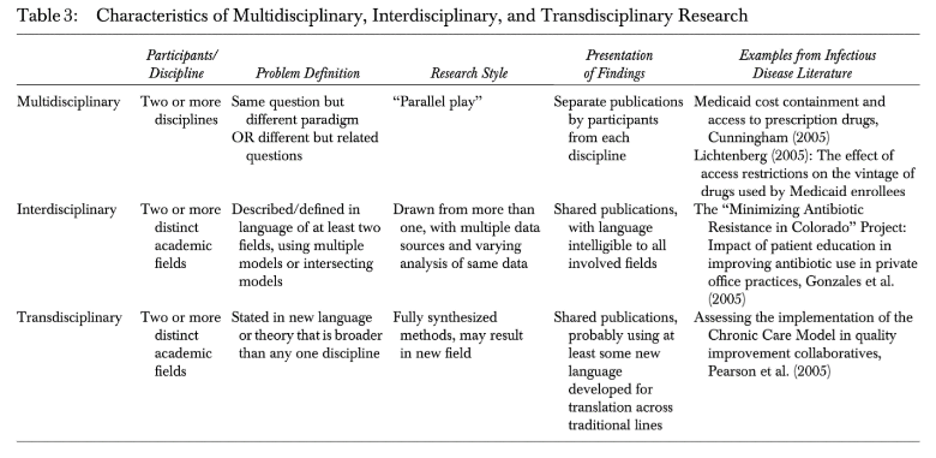What do we mean when we say “Interdisciplinary”?
“Interdisciplinary” has recently become an ill-defined buzzword across academia and industry. At the Games Institute, we used to shuffle through multiple prefixes including multidisciplinary, transdisciplinary, and interdisciplinary based on what felt right for the project. Throughout my co-op term, we often discussed which term best suited our ethos, mission, and debated how to define our boundary-crossing identity.
We explored the merits of each term:
- Starting with multidisciplinary, which implies numerous people are involved;
- post-disciplinary offered us the chance to bring in a new era that comes after isolated disciplines;
- interdisciplinary means that there is more integration between disciplines;
- while transformational interdisciplinarity would convey that new methodologies and new outcomes emerge from the mix of perspectives.
We ended up arriving at interdisciplinary, agreeing it was the most appropriate for the Games Institute.
Due to the exploding popularity of being “interdisciplinary”, the typology of the term itself has become slippery and difficult to apply. Furthermore, what interdisciplinarity means may differ between institutions, faculties, disciplines, and even companies. On the surface, it’s easy to qualify as interdisciplinary, provided you have at least two disciplines represented.
Research centres tend to hit this target easily, since they welcome professors and students from any faculty to engage and develop new knowledge in their specific problem space. However, simply creating a space that for many researchers to work beside each other does not ensure that they will work with each other. Environmental conditions need to not only facilitate interdisciplinary collaboration, they must push those collaborations to integrate and balance the disciplinary perspectives.
In a paper entitled “Defining Interdisciplinary Research: Conclusions from a Critical Reviewof the Literature” by Health Science scholars Sally W. Aboelela, Elaine Larson, Suzanne Bakken, Olveen Carrasquillo, Allan Formicola, Sherry A. Glied, Janet Haas,and Kristine M. Gebbie, the authors came up with a table that helps break down the main differences between the different prefixes associated with “-disciplinary”.

(Fig. 1. Spectrum of “Interdisciplinary” Definitions, created by Aboelela et al. “Defining Interdisciplinary Research: Conclusions from a Critical Review of the Literature (340).)
Considering the thoughts presented on this table combined with my experience working closely with interdisciplinary researchers, I come to the conclusion that interdisciplinarity is a spectrum. Interdisciplinarity is not just defined on how many academic disciplines are involved in a project, but rather, the degree of collaboration. As Aoelela et al, phrase it:
“The mere addition of researchers from various disciplines or with different academic and professional credentials is not sufficient to make a research effort interdisciplinary” (p. 342).
Understandably, then, the highest end of the interdisciplinary spectrum is when a common language and research style are created, synthesizing multiple methodologies from different disciplines—evolving into transdisciplinary groups.
The Games Institute’s commitment to advancing games and interactive technology research comes from an understanding that these areas of study are novice and require holistic viewpoints. Permeating multiple perspectives, approaches, and outcomes is vital for any attempt at understanding or observing how complex systems – like games, technology, and stories – work.
However, interdisciplinarity is not a one-size-fits-all solution, so the Games Institute ecosystem occupies positions across the entire spectrum. Our interdisciplinary range accounts for solo-projects, (like when an independent researcher engages two or more disciplinary perspectives), to industry collaborations (with a team of investigators spanning various academic faculties), to multi-year research syndicates with hundreds of members (like IMMERSe).
Aboelela SW, Larson E, Bakken S, et al. Defining interdisciplinary research: conclusions from a critical review of the literature. Health Serv Res. 2007;42(1 Pt 1):329-346. doi:10.1111/j.1475-6773.2006.00621.x
Jump to the next instalment, The Pam Report part 3: Games facilitate interdisciplinary discourse
Over the next few weeks, we’ll be sharing excerpts from Pamela Maria Schmidt's award-winning Co-op Report. Currently Research Projects Facilitator at the Games Institute, Pam received the English Co-op Report Award in recognition of her significant contribution to our community during her co-op terms as Operations Assistant (S'19) and Assistant Project Manager (F'19).
Stay tuned; Not only does the report showcase the brilliance of one of our researchers and staff members, it offers spectacular insight into the Games Institute culture. Pam discusses how and why we use games to facilitate interdisciplinary crossovers, and this springboards into a fantastic discussion on how we articulate interdisciplinarity in the fibres of what we do.
Go back to the beginning: The Pam Report part 1: Team Bonding through “One Night Ultimate Werewolf”